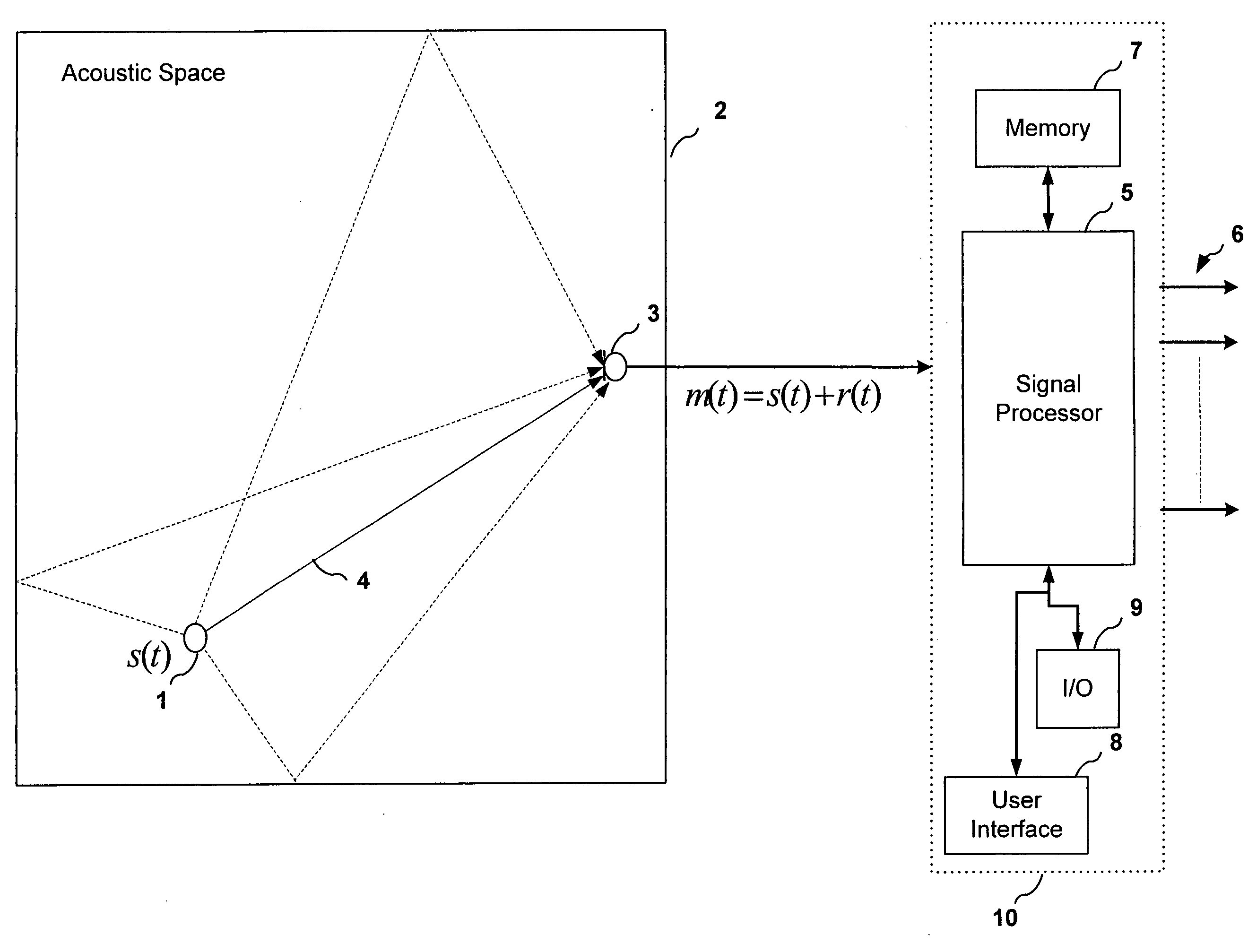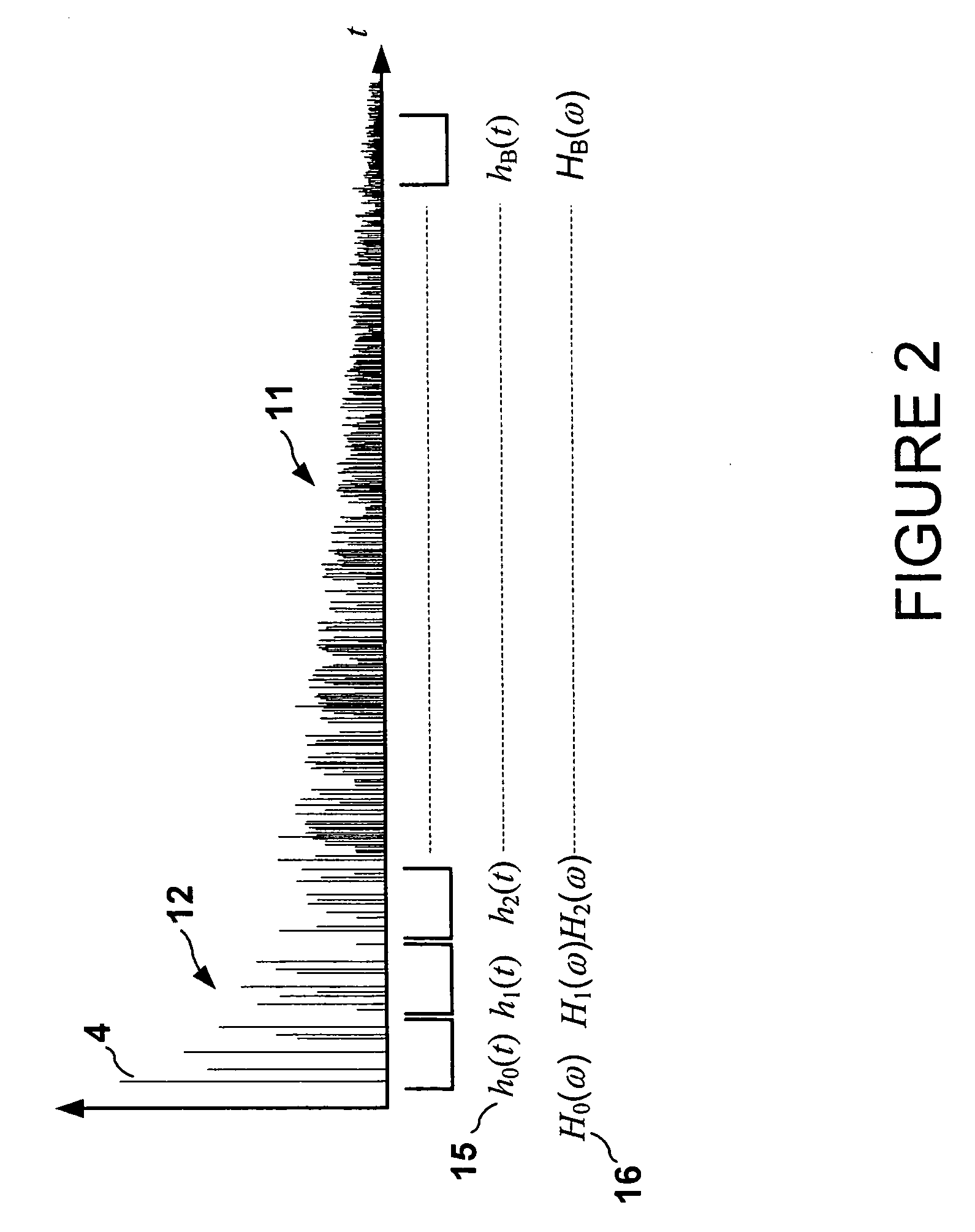System for modifying an acoustic space with audio source content
a technology for modifying an acoustic space and audio source content, which is applied in the field of audio source content processing, can solve the problems of difficult access to the concert hall inconvenient or impossible to measure the acoustic characteristics of the acoustic space, and undesirable sound effects
- Summary
- Abstract
- Description
- Claims
- Application Information
AI Technical Summary
Benefits of technology
Problems solved by technology
Method used
Image
Examples
Embodiment Construction
[0028]The present invention provides a system for altering the reverberant component of a signal. This is accomplished generally by first obtaining a perceptually relevant estimate of the frequency-domain representation of the impulse response of the underlying reverberant system. Using this estimate of the impulse response, the signal may be processed so as to extract the reverberant component of the signal, thus obtaining an estimate of the dry signal and an estimate of the reverberant signal. In some examples, further processing may be applied to the dry signal and the reverberant signal.
[0029]The impulse response of an acoustic space may provide a complete description of the reverberant system. Using the example of a singer in a concert hall, the reverberant system (in this case, the concert hall) can be completely described by the impulse response between the singer and the recording microphone. Various acoustic spaces (e.g. a concert hall versus a bathroom) can have very diffe...
PUM
 Login to View More
Login to View More Abstract
Description
Claims
Application Information
 Login to View More
Login to View More - R&D
- Intellectual Property
- Life Sciences
- Materials
- Tech Scout
- Unparalleled Data Quality
- Higher Quality Content
- 60% Fewer Hallucinations
Browse by: Latest US Patents, China's latest patents, Technical Efficacy Thesaurus, Application Domain, Technology Topic, Popular Technical Reports.
© 2025 PatSnap. All rights reserved.Legal|Privacy policy|Modern Slavery Act Transparency Statement|Sitemap|About US| Contact US: help@patsnap.com



